
Sacred Texts Native American Maya Index Previous Next
Buy this Book at Amazon.com

Yucatan Before and After the Conquest, by Diego de Landa, tr. William Gates, [1937], at sacred-texts.com
The Indians relate that there came into Yucatan from the south many tribes with their chiefs, and it seems they came from Chiapas, although this the Indians do not know; but the author so conjectures from the many words and verbal constructions that are the same in Chiapas and in Yucatan, and from the extensive indications of sites that have been abandoned. They say that these tribes wandered forty years through the wilderness of Yucatan, having in that time no water except from the rains; that at the end of that time they reached the Sierra that lies about opposite the city of Mayapán, ten leagues distant. Here they began to settle and erect many fine edifices
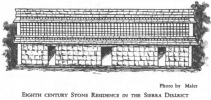
Click to enlarge
EIGHTH CENTURY STONE RESIDENCE IN THE SIERRA DISTRICT.
Photo by Maler
in many places; that the inhabitants of Mayapán held most friendly relations with them, and were pleased that they worked the land as if they were native to it. In this manner the people of the Tutul-xiu subjected themselves to the laws of Mayapán, they intermarried, and thus the lord Xiu of the Tutul-xius came to find himself held in great esteem by all. *
These tribes lived in such peace that they had no conflicts and used neither arms nor bows, even for the hunt, although now today they are
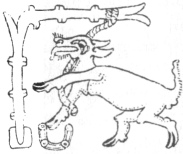 |
They had laws against delinquents which they executed rigorously; such as against an adulterer, whom they turned over to the injured party that he might either put him to death by throwing a great stone down upon his head, or he might forgive
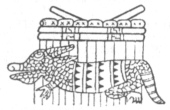 |
 |
 |
The governing Cocom began to covet riches, and to that end negotiated with the garrison kept by the kings of Mexico in Tabasco and Xicalango, that he would put the city in their charge.
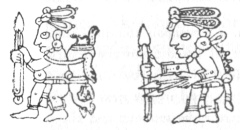 |
This Cocom was the first who made slaves; but out of this evil carne the use of arms to defend themselves, that they might not all become slaves. Among the successors of the Cocom dynasty was another
one, very haughty and an imitator of Cocom, who made another alliance with the Tabascans, placing more Mexicans within the city, and began to act the tyrant and to enslave the common people. The chiefs then attached themselves to the party of Tutul-xiu, a man
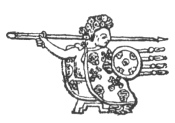 |
14:* The historical problem involved in this paragraph is far from settled. The word xiu is the common term for 'plant' in both Aztec and Maya, and we are told that the Tutul-xius were Mexicans. Their significant symbol was a plant, just as that of the Cocoms was the kambul or pheasant. They were called foreigners by the Cocoms, but they certainly became the dominant element in western Yucatan, and finally at the fall of Mayapán claimed to be the defenders of 'true Maya,' and the present paragraph is clearly a Xiu 'apologia.' Nevertheless the evidence for very strong Mexicanization of customs and religion around the year 1000 is unquestioned, although the language does not seem to have been affected, as was English by the Normans. And finally, Landa's statement as to the closer similarity between Yucatecan Maya and the language of the Chiapans is definitely correct, Tzeltal and Maya being the two branches of the Mayance family moss nearly alike.
15:† p. 16 The dart thrower, hulche in Maya, atlatl in Mexican, is a weapon common throughout ancient America generally. The text illustrations above are all taken from the Madrid Maya codex, except the last, which is Mexican. In the first a deer is caught by a spring trap set at a stream; in the next an armadillo is caught in a box trap, and in the next a turkey in a net or noose. The two hunters both carry hulches, the first as he sets out and the other as he returns with the deer on his back. The last figure is an Aztec warrior.
15:‡ A curious error in the Landa manuscript occurs here, stating that they wore "heavy coats of salt and cotton." The garment is the well-known ichca-huipil, corrupted in Yucatan to escuypil, of heavy quilted or 'tied' cotton strong enough to withstand arrows. Now in Maya taab (with double a) means 'to tie,' while tab (short a) means 'salt.' The error in the text would seem to have come from a mistranslation by Landa of what was told to him in Maya.